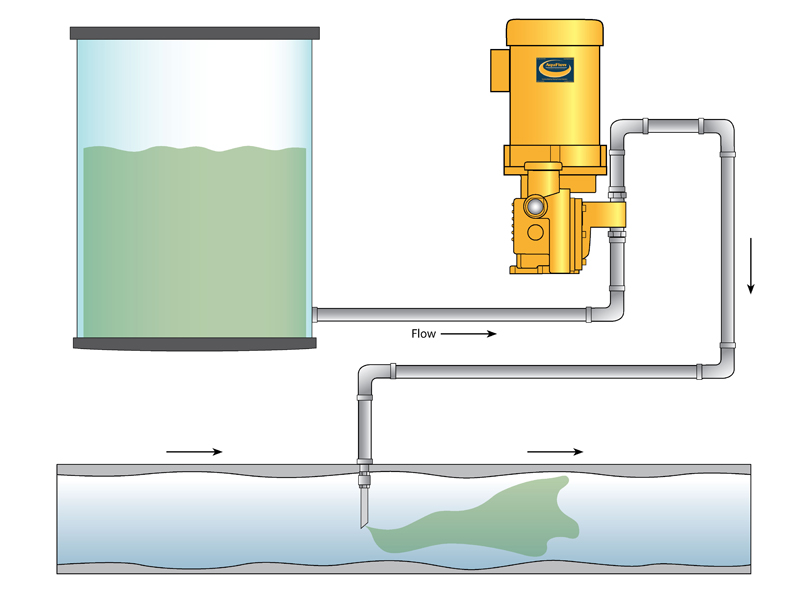This is the second of eight articles in the series Sizing & Selecting the Right Chemical Metering Pump. Read the previous article “Planning for your Application.”
A metering pump is used to inject chemicals precisely into a process to achieve a certain desired result. That result could range from a certain amount by volume or mass of fertilizer to a definite amount of acid into water to achieve a certain pH balance. Or it could even be a certain amount of disinfectant into water to achieve a predetermined amount of PPM (parts per million).
The actual injection rate or the rate at which the chemical needs to be added depends upon the application, desired result and also the concentration of the chemical. For example, in case of the amount of chlorine the formula for calculation of the chemical injection rate is:
IR = 0.006xQxC / S
Where Q – System flow rate in GPM, C – Desired PPM for the chemical and S – Concentration of the chlorine bleach in %
There are many methods to arrive at the desired chemical injection rate and usually engineers will specify the exact rate using such methods based upon the application. Once you know the rate of chemical injection which is usually given in Gallons Per Hour (GPH), you need to then start the process of sizing the pump.
The second most important piece of information is the pressure that the pump needs to overcome to inject the chemical. If you are injecting into a pipe then the chemical pump needs to be able to overcome the pressure in the pipe as well as the pressure drop in the chemical lines from the chemical pump to the injection point. A pump injecting into a pipe which is at 150 psi that is located 250 feet from the pump will have a significant line losses to overcome as well. SO the pump needs to deliver the required flow rate at well above 150 or even 200 psi. Another factor that affects the pressure drop in the chemical pipe is the diameter. The smaller the diameter of the pipe, the higher the drag and hence the pressure drop. If your pump is unable to overcome that combined pressure then the chemical will never get into the process. On the other hand any pump experiences a loss of flow especially at high pressure which may lead to not enough chemical being pumped into the process. So you need to follow the pump performance curve against pressure to make sure your flow requirements are met at the pressure it needs to deliver.
Usually the injection rate varies within an application depending upon various factors such as the flow and the quality of water being treated. So you are often working with a minimum and a maximum flow capacity for the injection pump. It is recommended to not exceed 90% of the pump capacity with the maximum flow requirement and not have to go below 10% of the pump capacity on the minimum requirements. There are ways to increase this effective range of the pump with controls such as VFD and stroke adjustment which we will deal with in detail under the controls section of this article.
Another important consideration in sizing a pump is the future changes in requirements. If we know that the treated water is going to increase in the near future it is better to select a pump with that higher flow capacity especially if it does not have to meet a minimum that goes below 10% of the pump capacity. You can always use the pump at lower capacity until the projected increase in demand materializes. This will prevent you from having to buy another pump.
